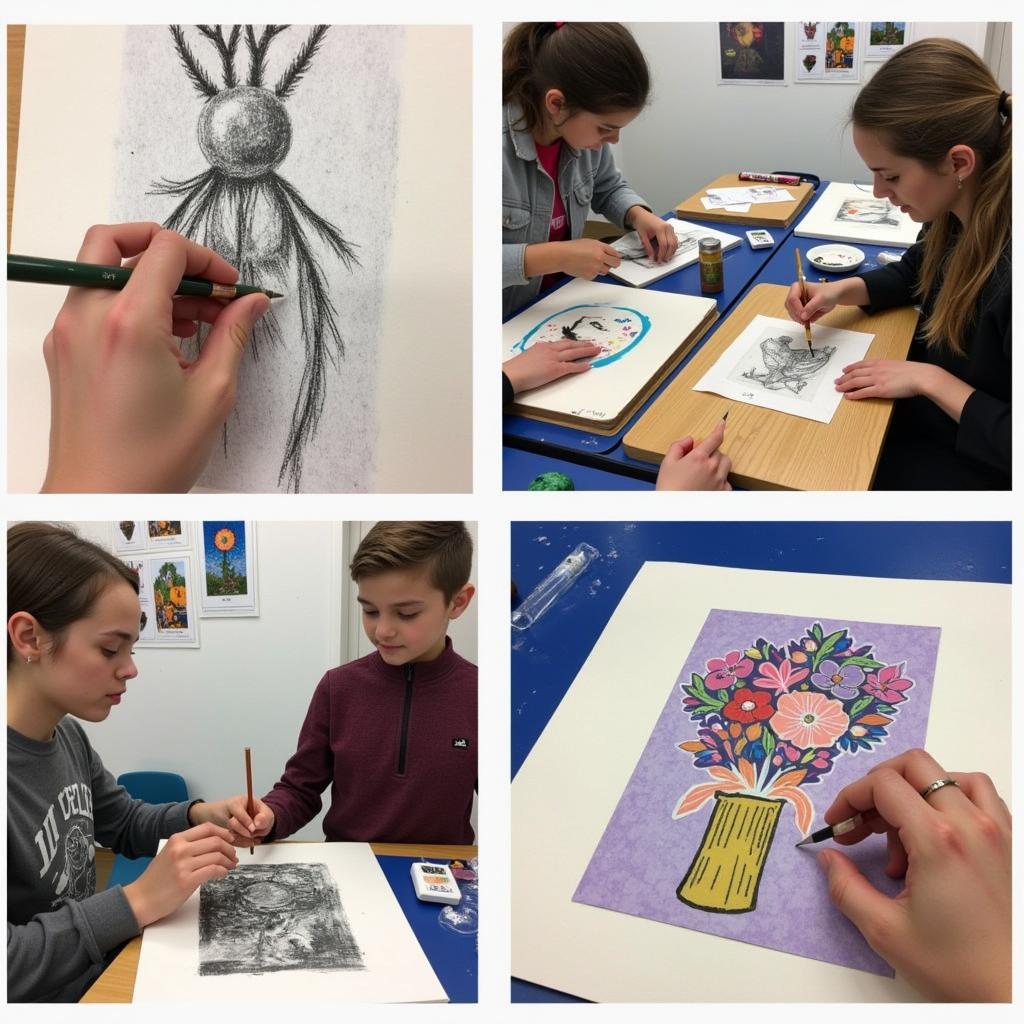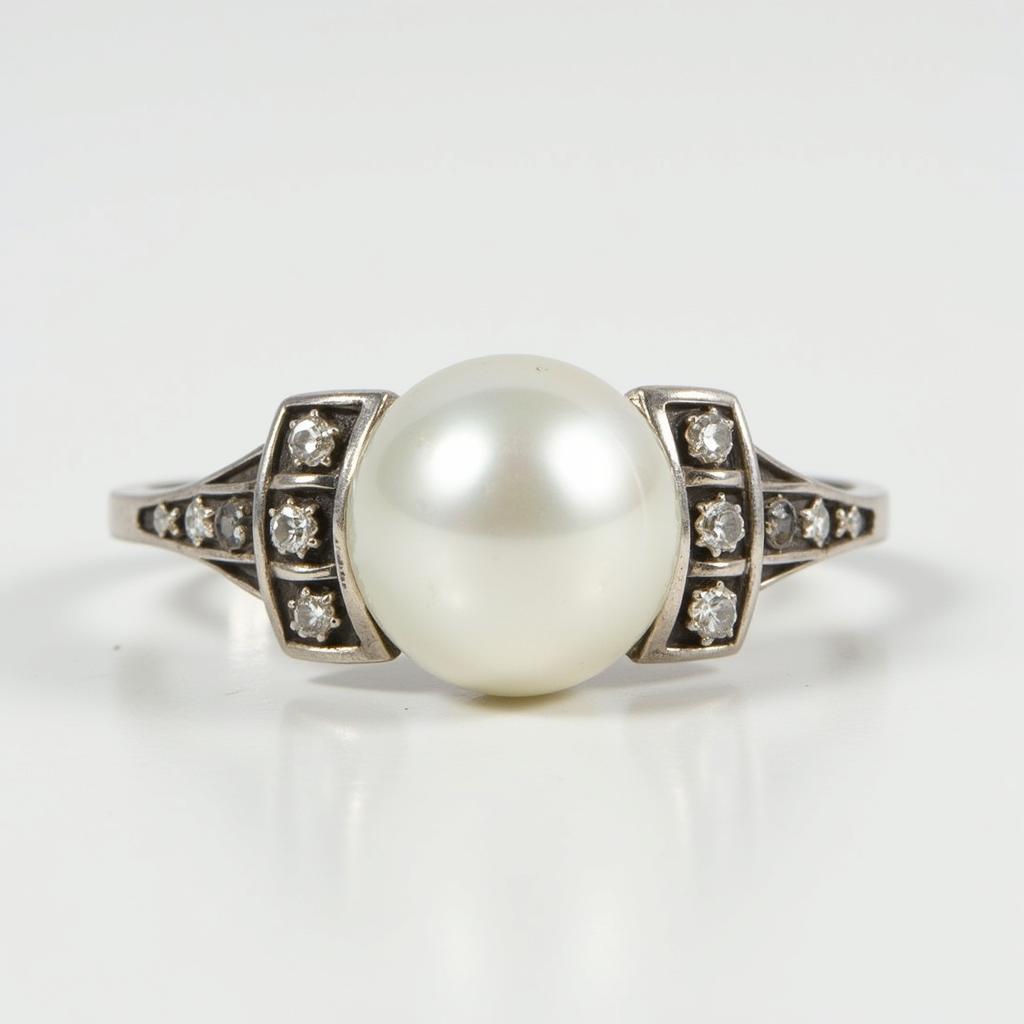Mastering 2 Dimensional Studio Art: A Comprehensive Guide
2 Dimensional Studio Art encompasses a wide range of artistic practices, from drawing and painting to printmaking and collage. It’s a world where creativity flourishes on a flat surface, exploring concepts, emotions, and narratives through line, shape, color, and texture. This guide delves into the captivating realm of 2D art, offering insights, techniques, and inspiration for both aspiring and established artists.
 Exploring various 2D art techniques like drawing, painting, printmaking and collage.
Exploring various 2D art techniques like drawing, painting, printmaking and collage.
What exactly defines 2 dimensional studio art? It’s about creating artwork on a two-dimensional plane, focusing on the interplay of visual elements within a defined space. This could be a canvas, a sheet of paper, a woodblock, or even a digital screen. The possibilities are endless, limited only by the artist’s imagination. Check out art classes modesto ca to further develop your 2D art skills.
Understanding the Fundamentals of 2 Dimensional Studio Art
The foundation of any successful 2D artwork lies in understanding the fundamental principles of art and design. These principles include:
- Composition: How elements are arranged within the artwork.
- Line: The use of lines to create shapes, textures, and movement.
- Shape: The two-dimensional areas defined by lines and contours.
- Color: The use of hues, saturation, and value to create mood and impact.
- Texture: The perceived surface quality of the artwork.
- Value: The lightness or darkness of colors.
Exploring Various 2 Dimensional Studio Art Mediums
2D art offers a diverse range of mediums to explore, each with unique characteristics and possibilities. From traditional methods like drawing with charcoal and painting with oils to more contemporary techniques like digital painting and mixed media, the choices are vast. Some popular mediums include:
- Drawing: Using pencils, charcoal, pastels, or ink to create lines and shapes.
- Painting: Applying pigments to a surface using brushes, palette knives, or other tools.
- Printmaking: Creating multiple impressions of an image from a matrix, such as a woodblock or etching plate.
- Collage: Combining different materials, such as paper, fabric, and photographs, to create a composite image.
- Digital Art: Creating art using digital tools and software.
What are the different types of 2 dimensional art?
2 dimensional art encompasses a diverse range of artistic expressions. From the delicate strokes of pen and ink drawings to the vibrant hues of acrylic paintings, the possibilities are vast. Here are a few examples:
- Drawings: This includes pencil drawings, charcoal drawings, pastel drawings, and ink drawings. Each medium offers unique characteristics and possibilities for expression.
- Paintings: From watercolor and acrylic to oil and gouache, paintings offer a wide spectrum of color and texture.
- Prints: Printmaking techniques like woodblock printing, etching, and lithography allow for the creation of multiple impressions of an image.
- Collage: This involves combining different materials to create a composite image. Collage can incorporate paper, fabric, photographs, and other found objects.
- Digital Art: Created using digital tools and software, digital art offers a new frontier for 2D artistic expression.
Are you looking for inspiration for your next 2D masterpiece? vermont wall art might just spark your creativity.
How can I improve my 2 dimensional studio art skills?
Improving your 2D art skills requires dedication, practice, and a willingness to experiment. Here are some tips to help you on your journey:
- Practice Regularly: Consistent practice is key to developing your skills. Set aside dedicated time for art-making, even if it’s just for a short period each day.
- Study the Masters: Analyze the works of renowned 2D artists. Pay attention to their composition, use of line and color, and overall approach to creating compelling imagery.
- Experiment with Different Mediums: Don’t be afraid to try new materials and techniques. Exploring different mediums can broaden your artistic horizons and help you discover your unique style. zellique art glass is a great example of pushing boundaries with different materials.
- Take Art Classes: Consider enrolling in art classes or workshops. Learning from experienced instructors can provide valuable guidance and feedback.
“Experimentation is crucial for artistic growth. Don’t be afraid to push boundaries and try new things.” – Amelia Dubois, renowned painter and art educator.
“Understanding the fundamentals is essential, but true artistry lies in the ability to break the rules and create something truly unique.” – David Chen, award-winning illustrator and graphic designer.
Thinking of making a statement with your art? large ocean art can provide stunning inspiration.
In conclusion, 2 dimensional studio art offers a rich and rewarding journey of creative exploration. By mastering the fundamental principles, exploring different mediums, and embracing experimentation, artists can unlock their full potential and bring their visions to life on a two-dimensional plane. metal wave wall art can also be a great source of inspiration for your 2D art journey.
For any support, contact us at Phone: 02462573573, Email: [email protected] or visit us at Savico Megamall, 7-9 Đ. Nguyễn Văn Linh, Gia Thụy, Long Biên, Hà Nội 10000, Việt Nam. Our customer service team is available 24/7.



